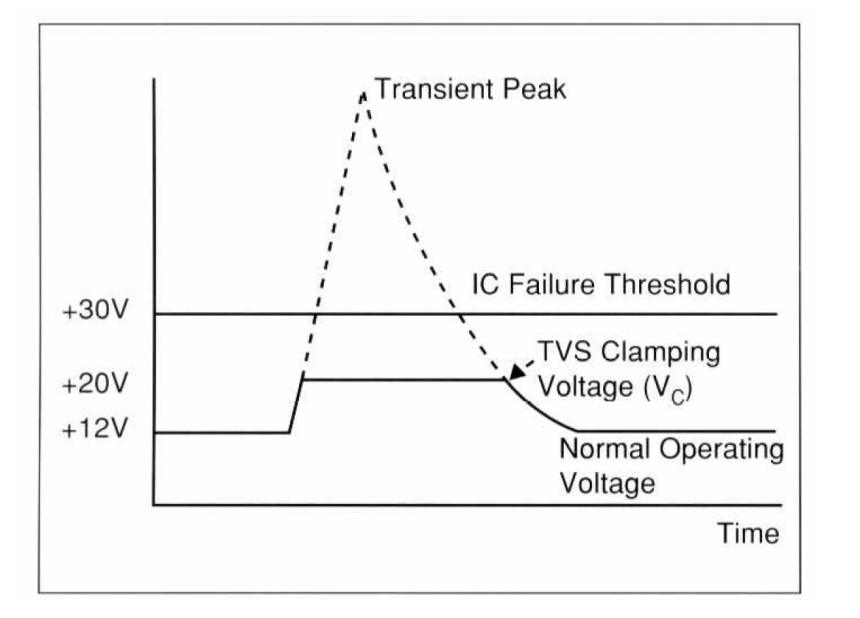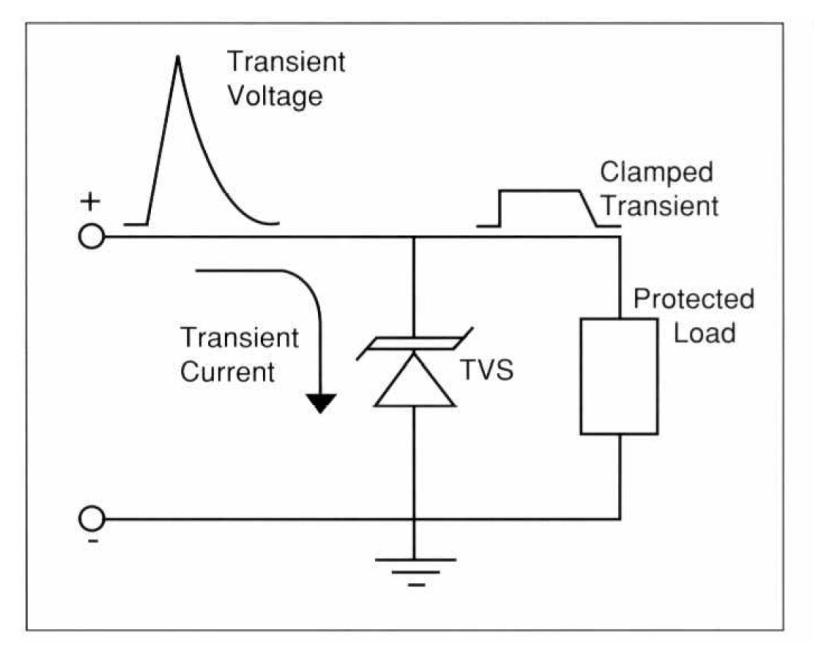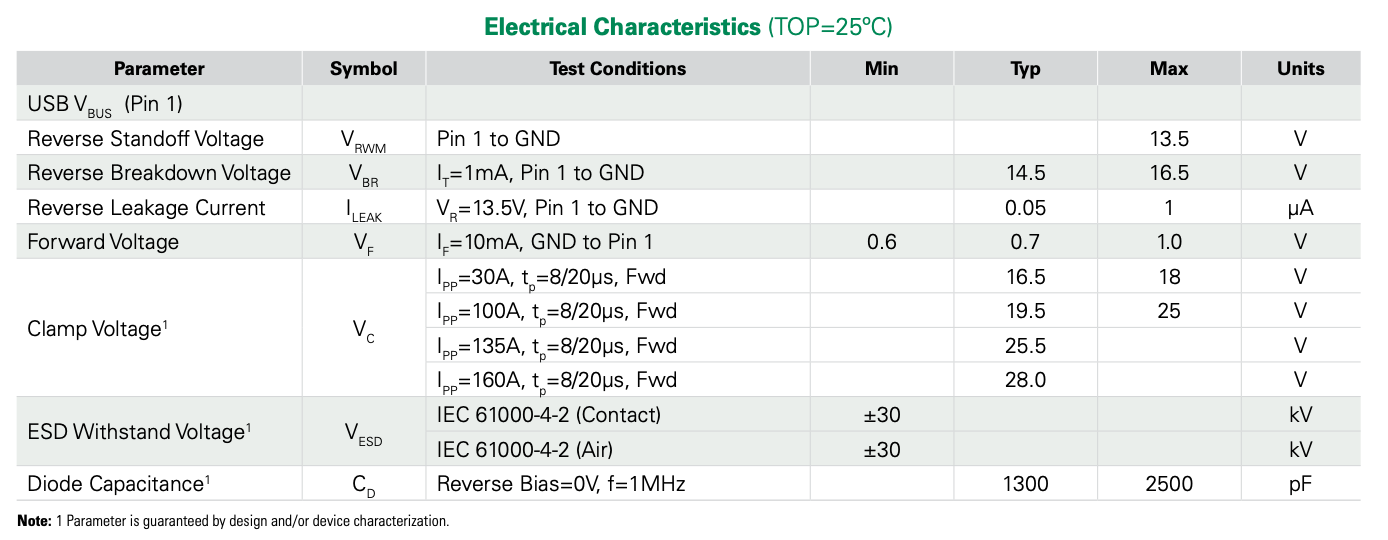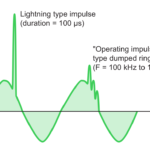Transients are sudden high-frequency overvoltages that can destroy a chip. A silicon Transient Voltage Suppressor (TVS) is a circuit protection component that either attenuates (reduces) or filters a transient voltage spike (overvoltage), thus protecting your circuit. Another type of TVS diverts a voltage spike away from your circuit (also known as shunting, clamping, or bypassing). A TVS protect circuits by utilizing the avalanche breakdown point of a silicon pn junction created for this purpose. The pn junction returns to normal when the spike has passed and will clamp again on the next spike. In normal operation, the TVS is invisible to the circuit. However, a spike event that lasts a long time will necessitate the installation of a heat sink for the TVS. TVS devices are typically specified to handle in the range of kilowatts of peak power flowing through the TVS.

TVS diodes (and TVS diode arrays) protect circuits from Electrostatic Discharge (ESD). A TVS can protect a signal chain either unidirectionally or bi-directionally. A bidirectional TVS is chosen when the protected signal is usually supposed to swing above and below ground, as in an AC voltage or a DC signal intended to operate at positive and negative voltages. A unidirectional TVS diode will only allow voltage either above or below ground (positive or negative voltage.)
TVSes are often used to protect inputs. A USB receptacle or port is an ideal case since ESD is often experienced at the input of a device: when someone walks across a carpet to plug in a USB cable, a charge can build up that causes electrostatic discharge at that input. The TVS takes the jolt and immediately clamps it, or cuts it off before the maximum voltage that the USB chip can withstand is reached.

As for how to choose a TVS, make sure you know the maximum operating voltages for the devices in the protected circuit (load), as this will determine VWM, which is known in various datasheets as the working peak voltage, the maximum working voltage, the rated standoff voltage, reverse standoff voltage or maximum off-state voltage. Littelfuse refers to VWM for a unidirectional TVS as “the maximum peak voltage that may be applied in the ‘blocking direction,’” if you expect no significant current flow. A bi-directional TVS is the same, except it applies to both directions. The VWM is typically 10 – 15% below the breakdown voltage (VBR). VBR is the voltage where TVS devices go into avalanche. Temperature affects VBR level, so VWM is at least 10% below VBR, as VBR may creep lower as temperatures drop. A TVS should not have a breakdown voltage equal to the working peak voltage.
The clamping voltage (VC) is the highest voltage specified in a TVS and is usually greater than VBR by 35 – 40% and ~60% higher than VWM. Peak pulse power (PPP) dissipation is another rating that factors into safely suppressing various transients or surges. Since:
PPP = VC x IPP,
where IPP is the worst-case surge current that is expected. The IEC 6100-4-2 standard describes measurement techniques and testing for certification that includes ESD protection and may be a valuable reference to help determine IPP. Other standards, such as the Human Body Model, may also be good references.
If there are still several TVSes to choose from, choose the TVS with the lowest capacitance value, especially when using them with high-speed (high-frequency) circuits.

A TVS should also be physically placed near the input on the PCB. Traces should be kept as short as possible to avoid parasitic capacitance.






